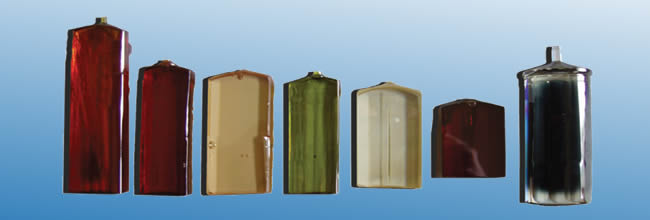|
Nonlinear crystals are specialized materials that interact with light in a way that changes its frequency (color), phase, polarization, and other properties. The magnitude of these effects is dependent upon the intensity of the input light. This is unlike traditional optics, where the interaction of light with the material doesn’t vary with the light’s intensity.
Nonlinear crystals are specialized materials that play a crucial role in the field of optics by enabling the manipulation of light in ways not possible with traditional optical materials. These crystals differ from their ‘linear’ counterparts by allowing the properties of light, such as its frequency, phase, and polarization, to be altered in response to the intensity of the light passing through them.
Nonlinear crystals are fundamental to a variety of advanced optical technologies and applications. These range from laser frequency conversion to optical telecommunication systems.
A nonlinear crystal is a type of crystal that exhibits nonlinear optical properties when subjected to intense electromagnetic fields, typically from laser light. Unlike linear optical materials, which exhibit linear responses to light intensity (obeying the principle of superposition), nonlinear crystals generate new frequencies and alter the polarization of light due to their nonlinear susceptibility.

Nonlinear optical effects: Nonlinear crystals can exhibit a variety of nonlinear optical effects, including:
Second harmonic generation (SHG): Generation of light at twice the frequency (half the wavelength) of the incident light.
Sum frequency generation (SFG): Generation of light at a frequency equal to the sum of the frequencies of two incident beams.
Difference frequency generation (DFG): Generation of light at a frequency corresponding to the difference between the frequencies of two incident beams.
Parametric amplification and oscillation: Generation of new frequencies through parametric processes, such as optical parametric amplification (OPA) and optical parametric oscillation (OPO).
Four-wave mixing (FWM): Generation of new frequencies by mixing of two or more incident beams.
Phase matching: To efficiently exploit nonlinear effects, phase matching is often required. This involves aligning the phases of interacting waves to ensure constructive interference and maximum energy transfer. Techniques such as temperature tuning, angle tuning, or quasi-phase matching (QPM) can be used to achieve phase matching in nonlinear crystals.
Common nonlinear crystals include:
Lithium niobate (LiNbO3): Used for applications in frequency doubling (SHG) and electro-optic modulation.
Beta barium borate (BBO): Known for its wide transparency range and suitability for SHG and OPA.
Potassium titanyl phosphate (KTP): Used in SHG and OPO applications.
Potassium dihydrogen phosphate (KDP) and its derivatives: Used in frequency conversion and high-power laser applications.
Nonlinear crystals are essential components in various fields of photonics, including:
Frequency conversion: Converting laser wavelengths to different frequencies for spectroscopy, imaging, and telecommunications.
Laser sources: Generating new wavelengths and improving the efficiency of laser systems.
Quantum optics: Generating entangled photon pairs for quantum information processing.
Ultrafast optics: Enabling nonlinear optical processes in femtosecond and attosecond laser systems.
ULTICrystal Technology develops and supplies different nonlinear crystals for fundamental, applied research and industrial applications. Available crystal growth techniques: Stepanov, Kyropoulos, Czochralski (CZ), temperature gradient technique (TGT), flux method.
|
|
|


